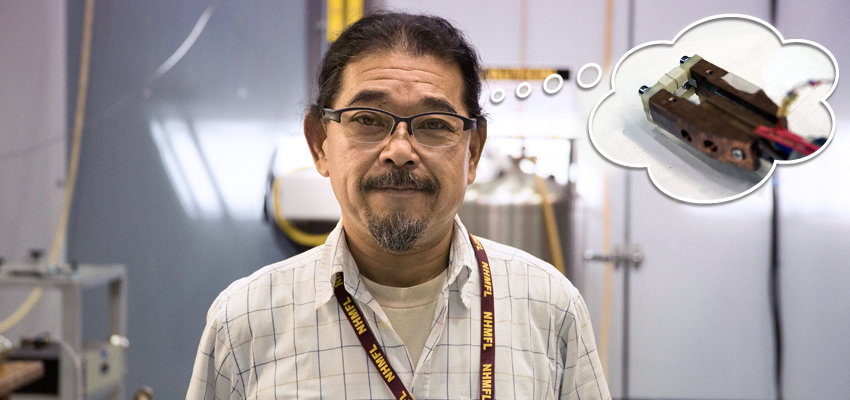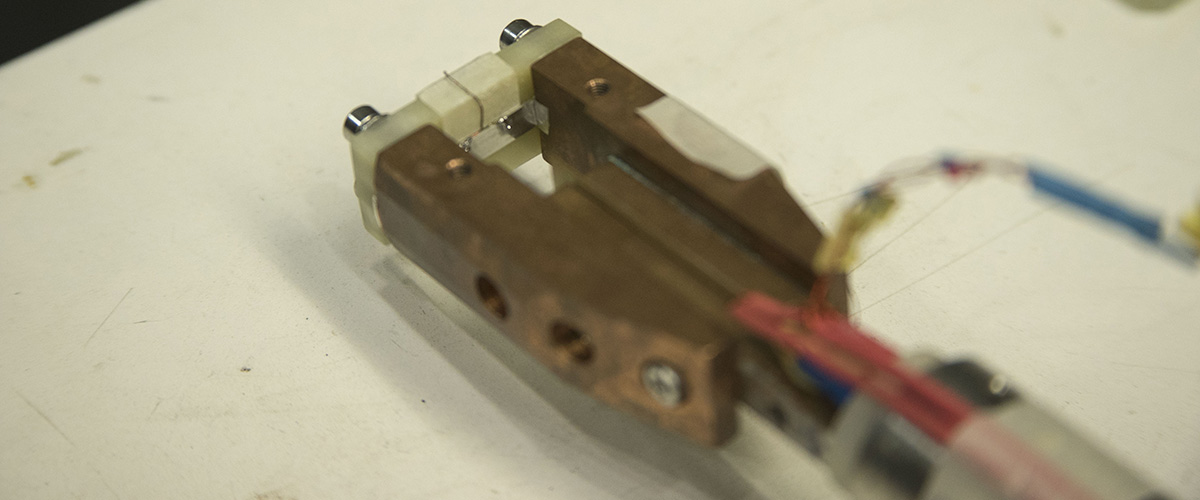Who is the scientist?
Hitoshi Kitaguchi is the unit director of superconducting wires at the National institute for Materials Science in Tsukuba, Japan. He specializes in studying superconducting materials and superconducting wires.

Hitoshi Kitaguchi of the National institute for Materials Science in Japan studies superconducting materials and superconducting wires.
What is he putting in the magnet?
Short answer: A future magnet.
Longer answer: Kitaguchi put tiny pieces of bismuth 2223, fabricated by a collaborator in Japan, in a 31 tesla magnet at the MagLab’s DC Field Facility. Bi-2223 is a high-temperature superconductor, meaning it is able to carry a superconducting current at relatively high temperatures. Most superconducting magnets in operation today are made of so-called “low-temperature” superconducting materials like niobium-titanium and niobium-tin, which reach a superconducting state only in extremely frigid environments that are costly to create.
Why do I care?
Although they are both used as research tools in places like the MagLab, superconducting magnets have a big advantage over their resistive magnet cousins: They cost a lot less money to operate because they don’t require the vast amount of electricity that resistive magnets do.
That’s why engineers and scientists have been working hard to discover and develop superconducting materials that will work in very high-field magnets. They are particularly focused on high-temperature superconductors (which can reach higher fields than low-temperature superconductors and would be cheaper to operate) such as yttrium barium copper oxide (YBCO), bismuth 2212, and the material Kitaguchi was testing, Bi-2223.
Because engineers want to use Bi-2223 to make new high-field superconducting magnets, they need to test the material inside an existing high magnetic field to see how it performs. Kitaguchi studies how to increase the amount of current the material can carry — and how large a field it can therefore generate — by tweaking its texture.
Kitaguchi brought several samples of Bi-2223 in tape form to test at the MagLab. He positioned the samples inside the magnetic field at different angles and ran a current through them. He used liquid helium to keep the wires very cold during his experiments, looking to confirm the homogeneity of his samples and the reproducibility of product.
Story by Kristen Coyne / Photos by Stephen Bilenky



